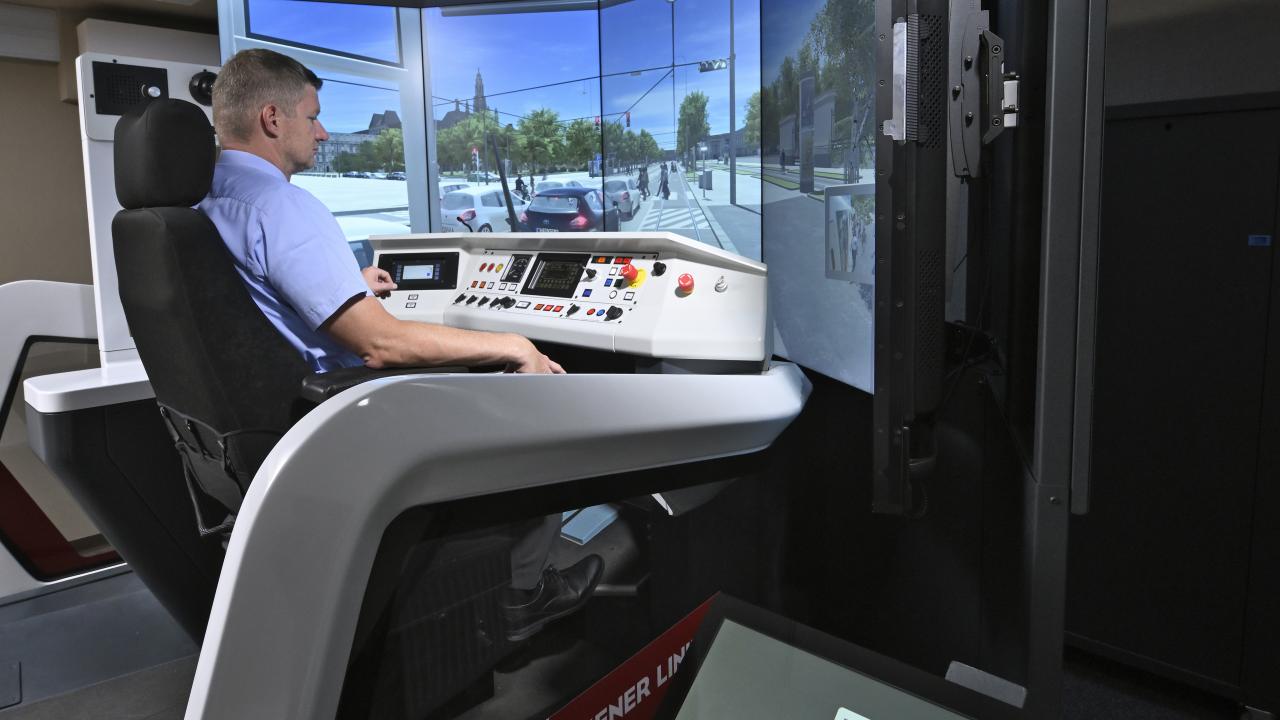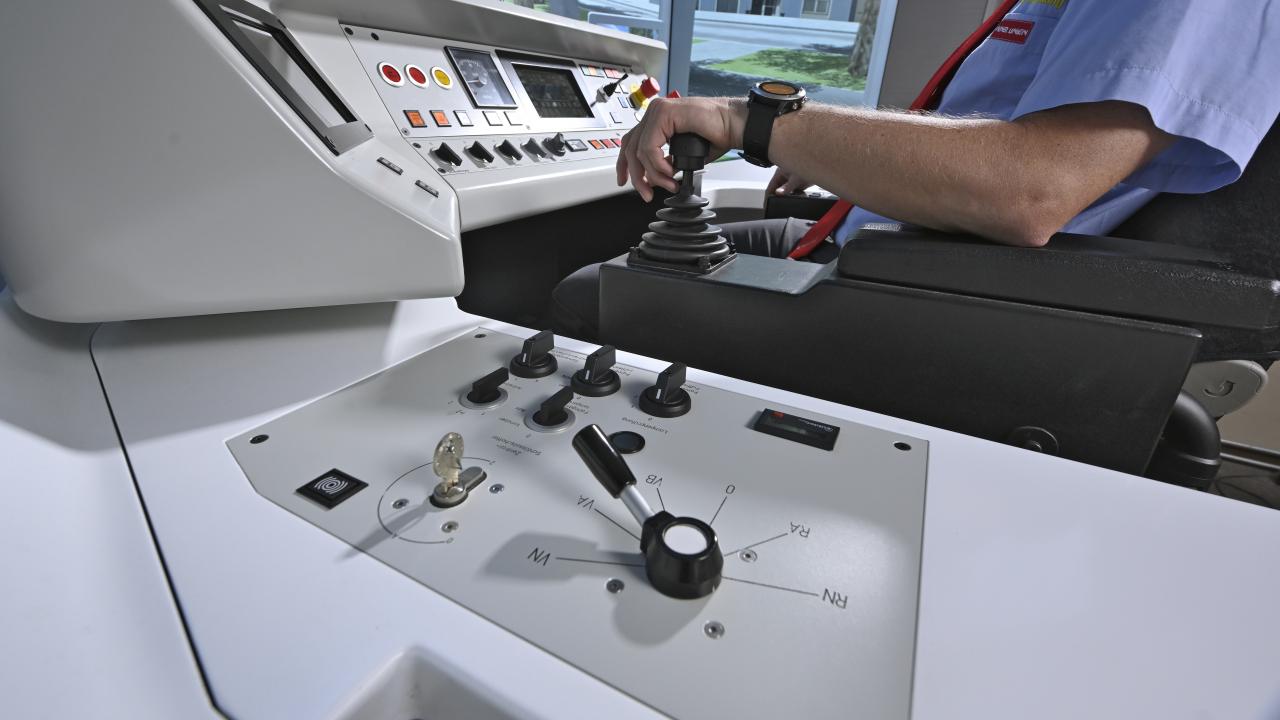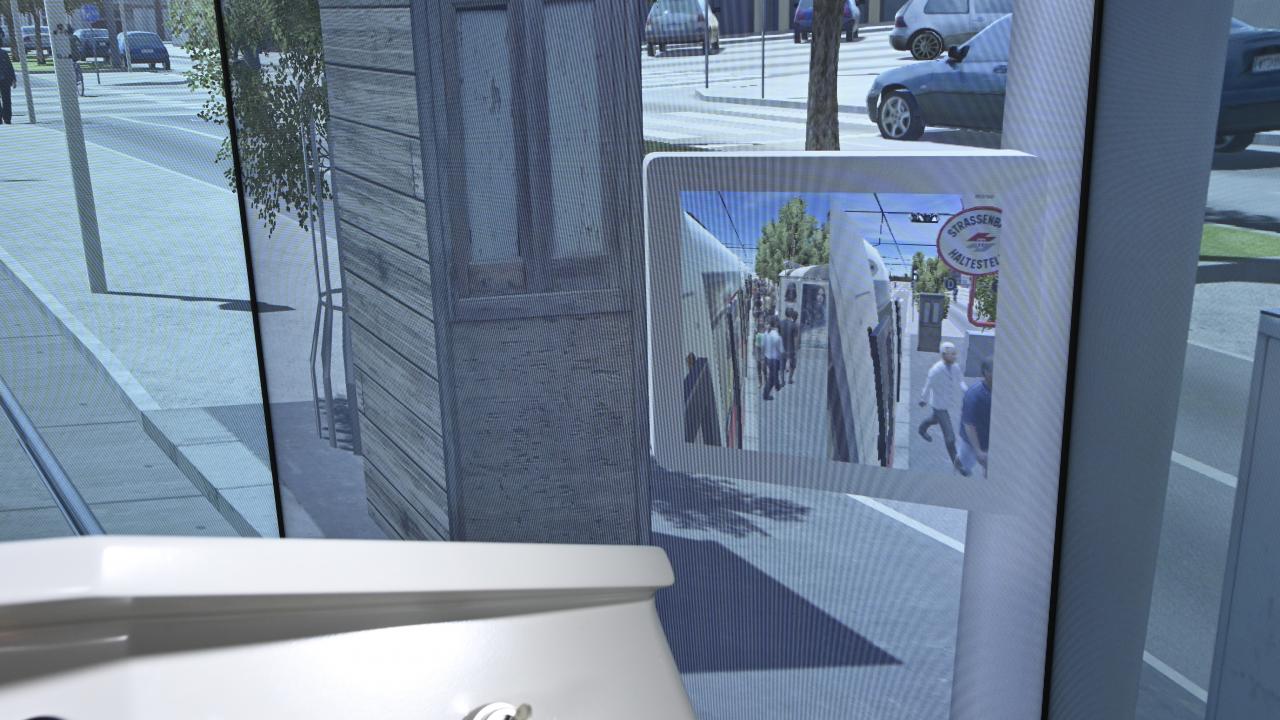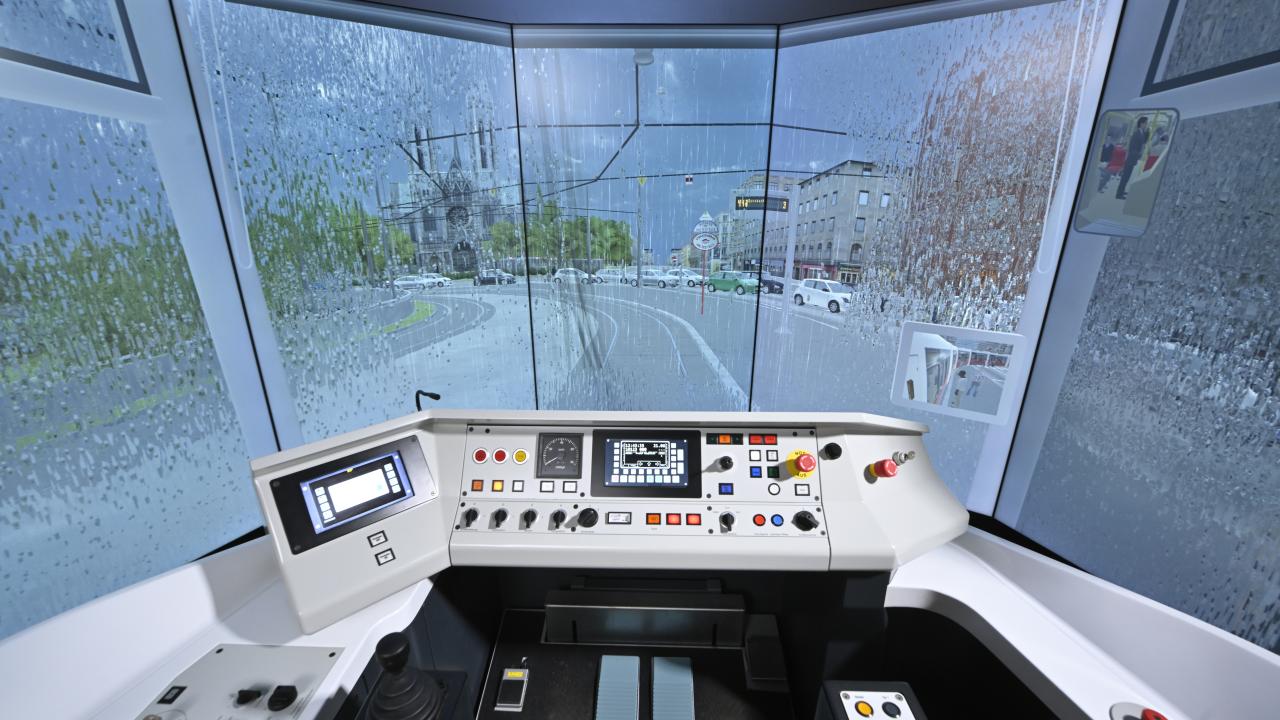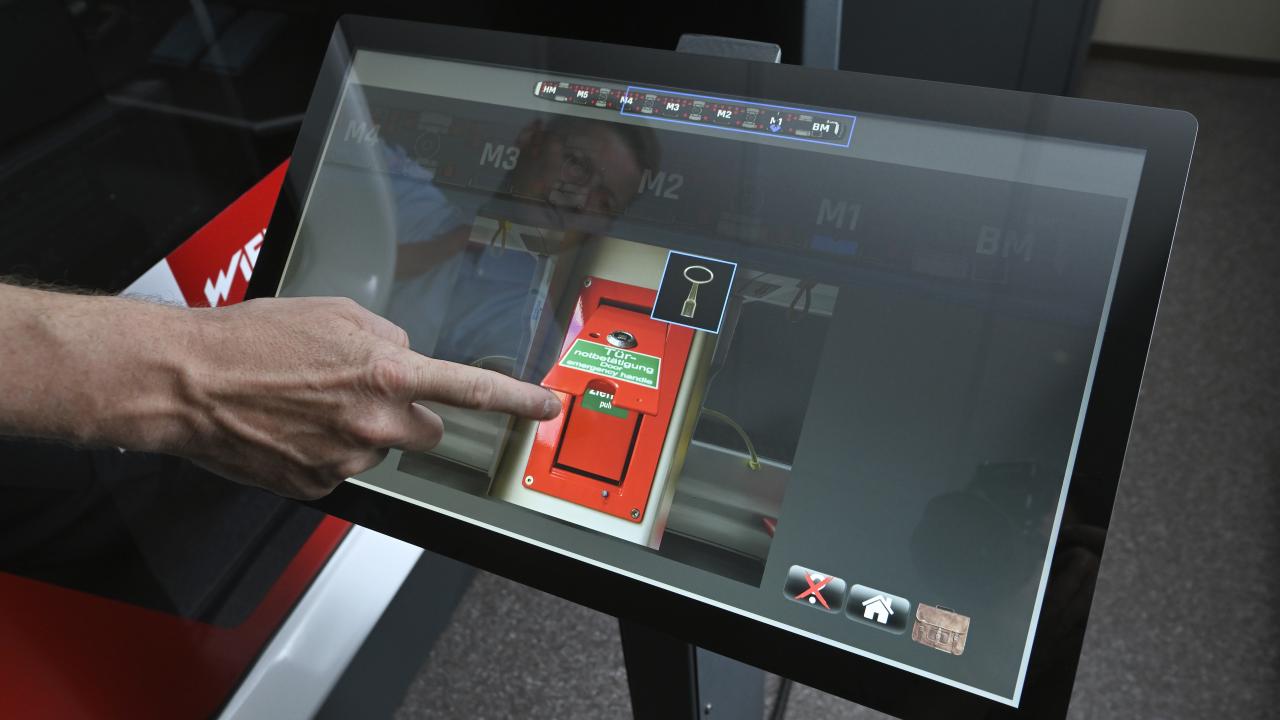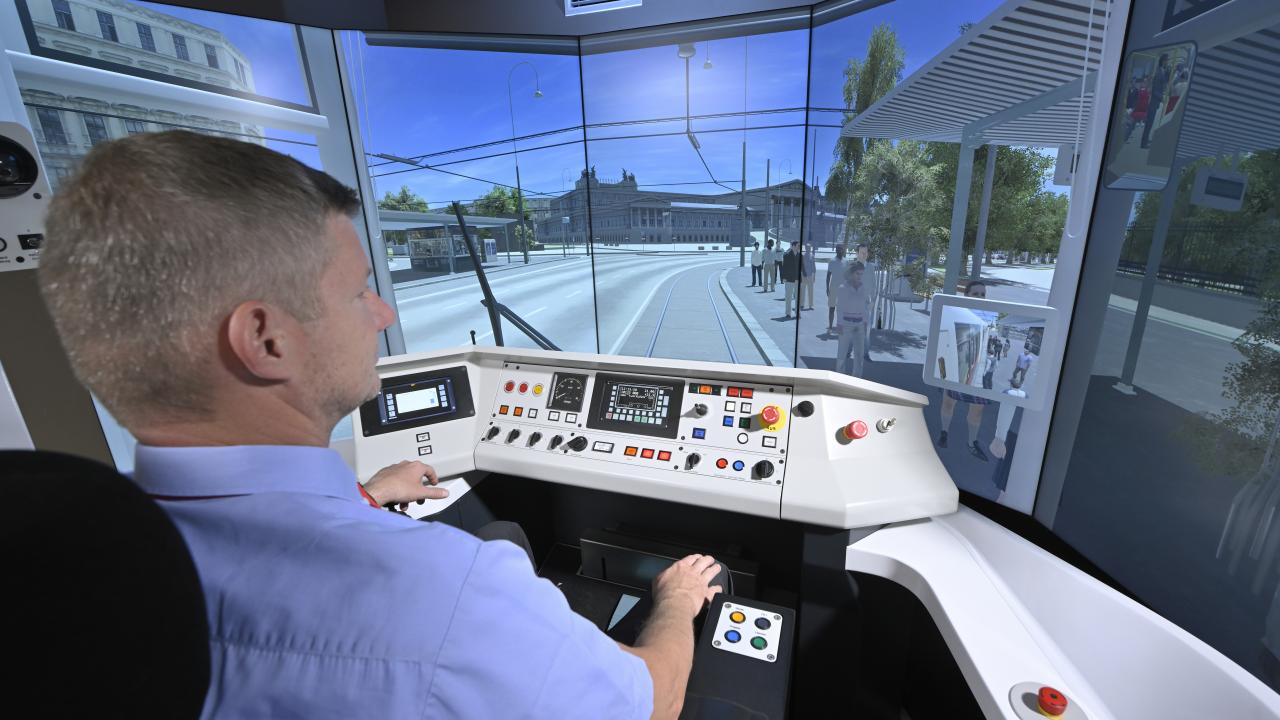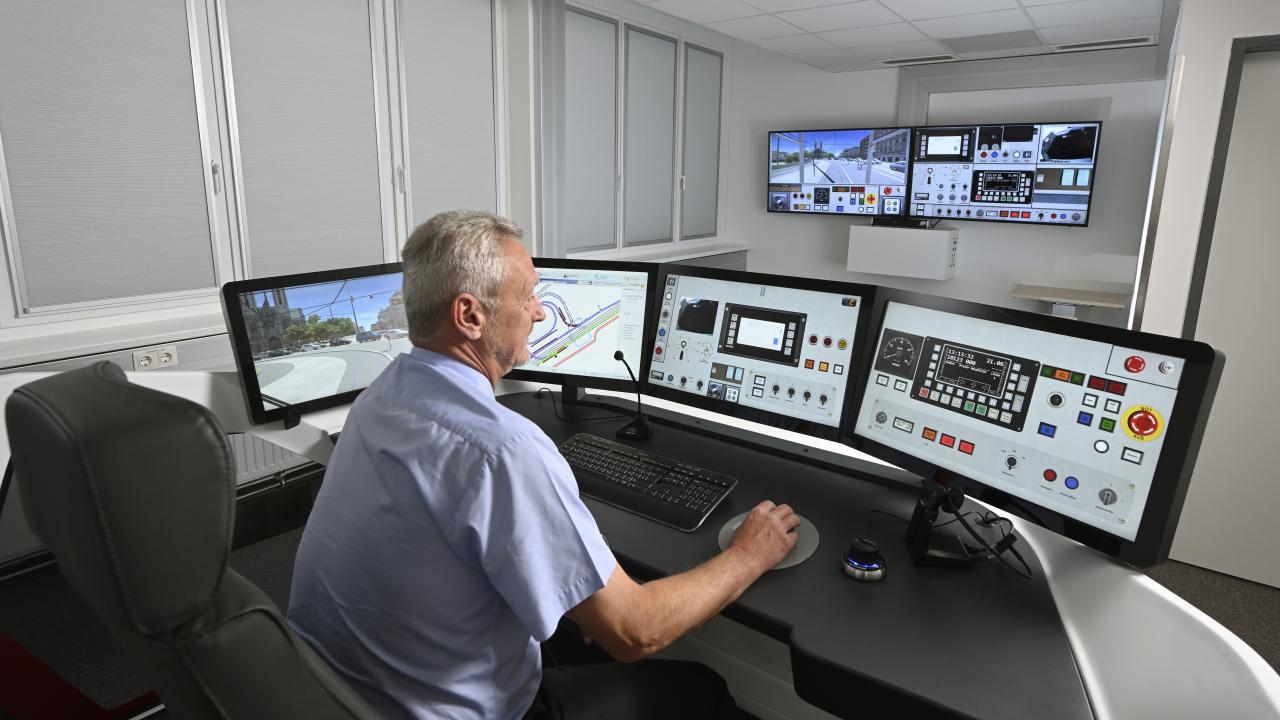Thursday, January 16, 2020
Wiener Linien takes tram simulation to a new dimension
The dimensions and characteristics of certain projects result in a company's products experiencing a qualitative leap forwards. Normally, these projects are accompanied by a customer that has very clear ideas of what they are looking for, significant experience in the field and an innovative vision of creating something that goes beyond what is already available on the market. This is the case of Wiener Linien, Vienna's transport operator, which, since December, now has a new tram simulation system for its Siemens ULF vehicles and the new Bombardier Flexity vehicles that will be coming to the Austrian capital's streets in the near future.
The hardware of the simulation system is made up of two training stations with a replica driver's desk, one for the Siemens vehicle (installed in December 2018) and another for the Bombardier. The training stations feature an impressive new display system with 5 vertical screens and virtually invisible frames. Each of them also features the three degrees of freedom movement system designed by LANDER, based on the line drawn as part of the project for RNV. The units also have three instructor stations and two observation stations designed for students who are not using the simulator at the time.
However, going back to the start of this article, the main feature of this project, was not the actual hardware, but the ultra-clear vision of all Wiener Linien's tram staff concerning the training tool they chose to add to their training centre in Vienna's Simmering district. The software has innumerable minor functions to give the tram simulator a hitherto unknown level of training reliability. The functions include the possibility of adding questionnaires for trainees, dynamic visual information on the lateral distances between trams and a range of objects around them, the possibility of simulating an endless number of hazardous situations and training events for Wiener Linien's tram operations, an eye-tracking system, and many others. All of this is of course in addition to the simulation of the historic centre, known as the Ring, of a striking, historic city like Vienna, which is depicted magnificently in this visual system requested by the Viennese operator.
As mentioned at the beginning of this article, all these factors have allowed LANDER to take its simulators to the next level and boast a new showcase for future projects and operators interested in tram simulation. We would therefore like to thank Wiener Linien for the faith deposited in our team at all times and their clear commitment to excellence.
We hope that soon, we can replicate this experience in other cities around the world and, of course, that our partnership with Wiener Linien remains in place for many years to come.
